Time travel stories have fascinated readers for generations, and honestly? I get why. I remember getting completely lost in my first time travel book as a teenager, spending hours trying to figure out the paradoxes and wondering if changing one small thing could really reshape everything. Turns out I wasn’t alone in this obsession.
You know how some time travel stories make your brain hurt trying to follow all the rules, while others just let you go along for the ride? According to Quirk Books’ analysis of time travel narratives, there are basically three ways authors handle this stuff: Single Continuum (where events happen only one way), Fixed Points (where major events can’t be changed), and Infinite Alternates (where any action can create new realities).
This guide digs into 30 exceptional time travel stories that’ll mess with your head in the best possible way, showing you exactly what makes each one special and helping you find your next mind-bending read.
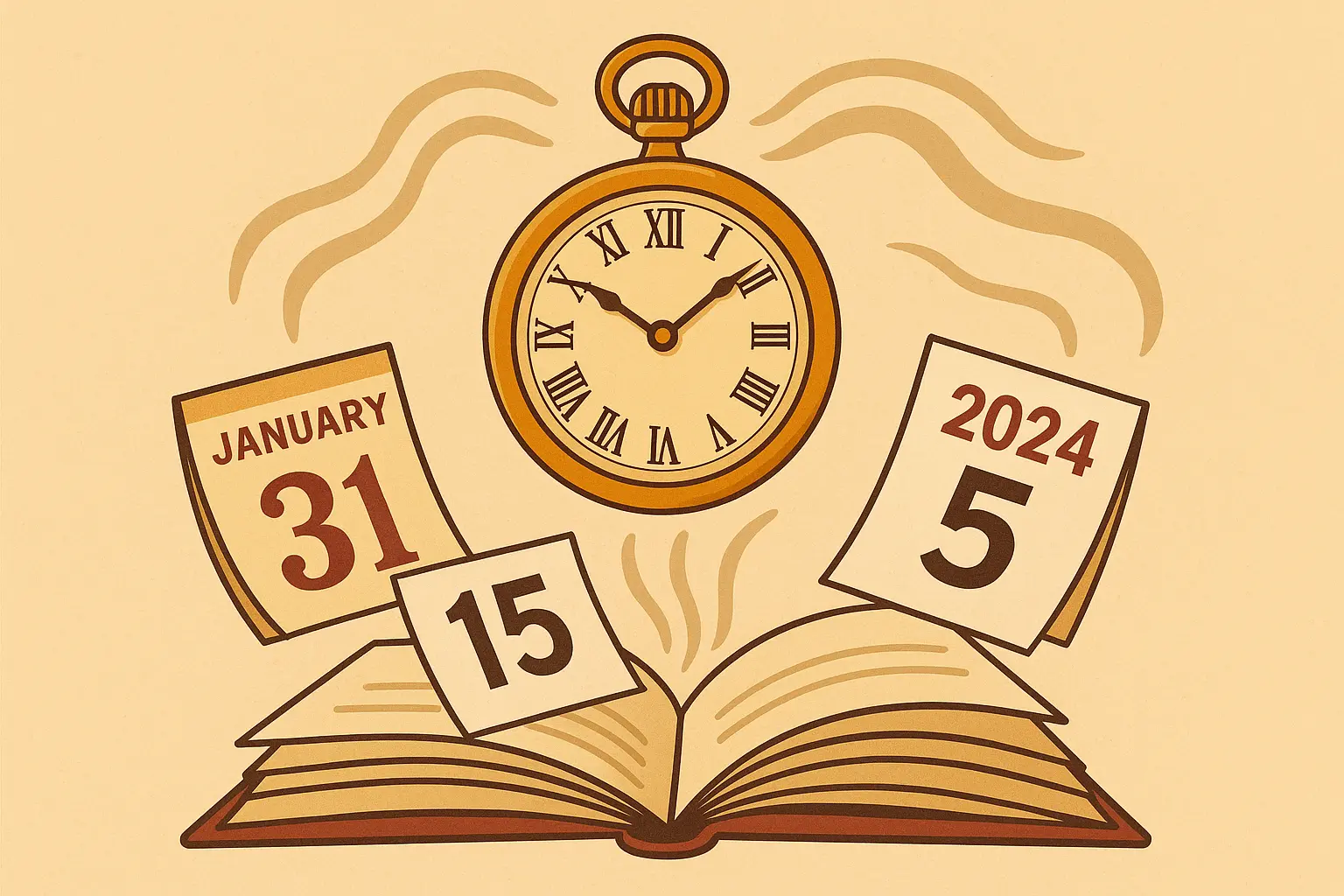
Table of Contents
-
What Makes a Great Time Travel Story Worth Reading
-
Classic Literature That Started It All
-
Science Fiction Stories That Push Boundaries
-
Contemporary Fiction With Temporal Twists
-
Young Adult Adventures Through Time
-
Horror Stories That Terrify Across Centuries
-
Short Stories and Novellas That Pack a Punch
-
Deep Dive Analysis of Complex Time Travel Narratives
-
How Each Story Measures Against Key Quality Criteria
-
Finding Your Perfect Time Travel Story Match
-
Final Thoughts
TL;DR
-
Time travel stories work best when they establish clear rules and stick to them – no changing the game halfway through
-
The strongest stories use time jumping to explore deeper stuff about regret, love, destiny, and what makes us human
-
Character motivation matters way more than scientific accuracy – readers need compelling reasons for messing with time
-
Different genres approach time travel uniquely: literary fiction uses it as metaphor, horror cranks up the dread, romance makes love transcend time itself
-
The best stories balance complex plotting with emotional gut punches that make you actually care about what happens
-
Historical accuracy makes everything feel more real when stories visit specific time periods
-
Modern time travel fiction spans from hardcore science to pure fantasy – there’s literally something for everyone
What Makes a Great Time Travel Story Worth Reading
Here’s the thing about time travel stories – they can either be absolutely brilliant or complete disasters, and the difference usually comes down to six key elements. The best ones establish how their time travel works and stick to those rules, develop characters with real reasons for messing with time, and keep their plots organized despite juggling multiple timelines.
But here’s what really matters: great time travel fiction isn’t about the mechanics of moving through time. It’s about what happens to people when they’re ripped out of their natural place in history. You’ll find that the most memorable stories use time travel as a way to examine universal human experiences – regret over past decisions, curiosity about alternate life paths, or the desperate desire to prevent tragedy.
The complexity that makes these stories work is similar to what you see in short story examples, but amplified by temporal elements that add layers most writers can barely handle.
|
Quality Criteria |
What Makes It Work |
Common Pitfalls |
|---|---|---|
|
How Time Travel Actually Works |
Clear rules set up early and followed religiously |
Changing rules mid-story or boring science lectures |
|
Why Characters Risk Everything |
Personal stakes that justify temporal risks |
Time travel “just because” or weak reasoning |
|
How the Story’s Put Together |
Organized timeline management with clear cause-effect |
Confusing multiple timelines or gaping plot holes |
|
What the Story’s Really About |
Universal themes explored through temporal lens |
Focusing only on time travel gimmicks |
|
Getting History Right |
Authentic period details when visiting past/future |
Lazy research or obvious mistakes |
|
Emotional Gut Punch |
You’re invested in outcomes across timelines |
Characters feel distant or stakes unclear |
Time Travel Rules That Actually Make Sense
The foundation of any compelling time travel story is its internal logic. Does the author establish clear rules about how time travel works in their universe? More importantly, do they actually stick to those rules when things get complicated?
You don’t need a PhD in theoretical physics to enjoy these stories, but you do need consistency. Some authors go the “mysterious force” route, keeping the mechanics deliberately vague while focusing on character development and consequences. Others dive deep into scientific speculation, grounding their narratives in quantum physics or mind-bending theoretical frameworks. Both approaches can work brilliantly – what kills a story is flip-flopping between them.
Take Stephen King’s approach in “11/22/63” – he establishes that the portal always leads to September 9, 1958, and that the past actively fights back against change through his concept of “obdurate past.” When Jake tries to prevent Kennedy’s assassination, the resistance escalates from minor annoyances to life-threatening accidents. These consistent rules create genuine tension and consequences throughout all 849 pages.
Characters Who Have Real Reasons to Mess With Time
Nobody should travel through time just because they can. That’s boring. The most engaging time travel protagonists have compelling, deeply personal motivations that drive the narrative forward. Maybe they’re trying to save someone they love, prevent a historical catastrophe, or understand their own identity across different time periods.
Character growth becomes particularly fascinating in time travel stories because protagonists often encounter different versions of themselves or witness how their actions ripple across decades. The best authors use this unique opportunity to explore how people change – or stay fundamentally the same – when confronted with the weight of temporal responsibility.
Plot Structure That Doesn’t Collapse Under Its Own Weight
Managing multiple timelines, cause-and-effect relationships, and potential paradoxes is like juggling flaming torches while riding a unicycle. One wrong move and everything falls apart. You’ll notice that successful time travel authors often use specific structural techniques: focusing on a single character’s journey through different eras, using parallel narratives that eventually converge, or employing cyclical storytelling that mirrors the temporal themes.
Understanding fundamental storytelling techniques becomes crucial when dealing with the intricate plot developments that time travel demands.
Pacing becomes absolutely critical when dealing with complex temporal mechanics. Rush through the setup, and readers get lost. Spend too much time explaining the rules, and the emotional momentum dies. The best stories find that sweet spot where complexity serves the narrative rather than overwhelming it.
Classic Literature That Started It All
Look, I get it – when someone mentions “classic literature,” your eyes might start glazing over. But trust me, these old-school time travel stories are anything but boring. These authors basically invented all the cool stuff we see in modern time travel fiction, and honestly? Some of their ideas are still better than what Hollywood’s churning out today.
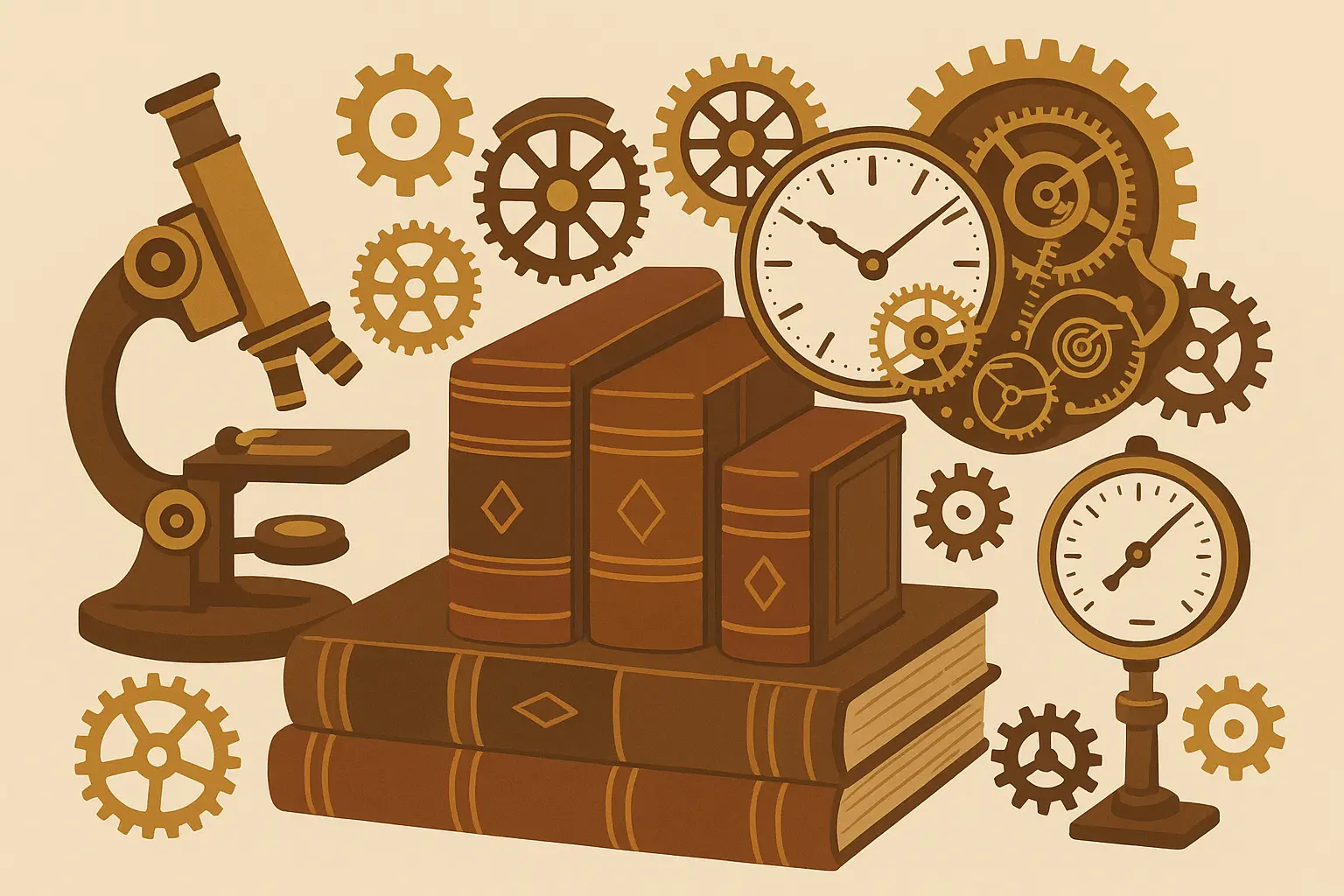
1. “The Time Machine” by H.G. Wells
This is where it all started, folks. Wells basically said “Hey, what if we could build a machine that travels through time?” and then actually made it work on the page. His Time Traveler (yeah, that’s literally what Wells calls him) zips forward to the year 802,701 and finds humanity split into two species: the pretty, useless Eloi living it up on the surface, and the creepy Morlocks lurking underground.
Here’s the thing that still gives me chills – Wells wasn’t just writing a fun adventure story. He was basically looking at the rich-versus-poor divide in Victorian England and saying, “Hey, if this keeps up, we might literally evolve into two different species.” Dark stuff, but brilliant.
The story works because Wells keeps it simple. No confusing paradoxes, no rules that change halfway through. Just a guy, a machine, and a future that’s way more messed up than anyone expected. Plus, that ending where the Time Traveler disappears forever? Still haunts me.
2. “A Connecticut Yankee in King Arthur’s Court” by Mark Twain
Mark Twain basically invented the “fish out of water” time travel story, and he did it by having a 19th-century American wake up in medieval England after getting knocked unconscious. No fancy science, no explanations – just boom, you’re in Camelot now, deal with it.
What makes this story so good is that Twain’s making fun of everyone. He’s poking holes in all those romantic ideas about the “good old days” while also taking shots at American arrogance. His main character, Hank, tries to bring modern technology to medieval times and… well, let’s just say it doesn’t go as planned.
This book basically created the template for every “modern person goes back in time” story you’ve ever seen. And Twain’s sense of humor keeps you laughing even when things get dark.
3. “Slaughterhouse-Five” by Kurt Vonnegut
Billy Pilgrim becomes “unstuck in time,” jumping around his life like a broken record. One minute he’s a kid, next he’s a soldier in World War II, then he’s on an alien planet. Vonnegut never really explains why this happens – maybe it’s PTSD, maybe it’s aliens, maybe it’s just how trauma works.
This book messed me up in the best way. Vonnegut uses time travel to show how war breaks people, how some experiences are so horrible they shatter your sense of time itself. The aliens Billy meets have this philosophy that all moments happen at once, so death is just another moment, not an ending.
It’s weird, it’s sad, it’s funny, and it’ll make you think about time in ways you never have before. Fair warning though – this isn’t a fun romp through time. It’s heavy stuff.
4. “The Time Traveler’s Wife” by Audrey Niffenegger
Henry has a genetic condition that makes him randomly disappear and reappear in different times. His wife Clare experiences their relationship normally while Henry keeps vanishing and showing up at random points in her life. It sounds confusing, but Niffenegger makes it work.
What’s brilliant about this book is that it treats time travel like a disability rather than a superpower. Henry can’t control when he goes, where he ends up, or how long he stays. Every goodbye might be permanent, every hello is precious because you know it’s temporary.
I’m not gonna lie – this book will wreck you emotionally. But it’s also one of the most beautiful love stories ever written. Niffenegger shows how real love survives impossible circumstances, even when time itself is working against you.
Science Fiction Stories That Push Boundaries
Now we’re getting into the good stuff – stories that take time travel seriously and really dig into what would happen if we could actually mess with time. These authors don’t just wave their hands and say “magic.” They think through the consequences, and boy, are those consequences wild.
5. “11/22/63” by Stephen King
This is the big one. King spent 849 pages exploring one simple question: What if you could prevent Kennedy’s assassination? Jake finds a time portal in a diner that always leads to September 9, 1958, and decides to spend five years in the past stopping Lee Harvey Oswald.
But here’s King’s genius twist – the past fights back. He calls it the “obdurate past,” and it’s like history has its own immune system. Try to change something small, you get minor problems. Try to change something huge, and the past will literally try to kill you.
I spent weeks reading this book, completely absorbed in King’s version of the late 1950s and early 1960s. The historical detail is incredible, but what really got me was Jake’s relationship with Sadie, a librarian he falls in love with. King makes you care so much about their happiness that when Jake has to choose between love and saving the president… man, that’s some tough stuff.
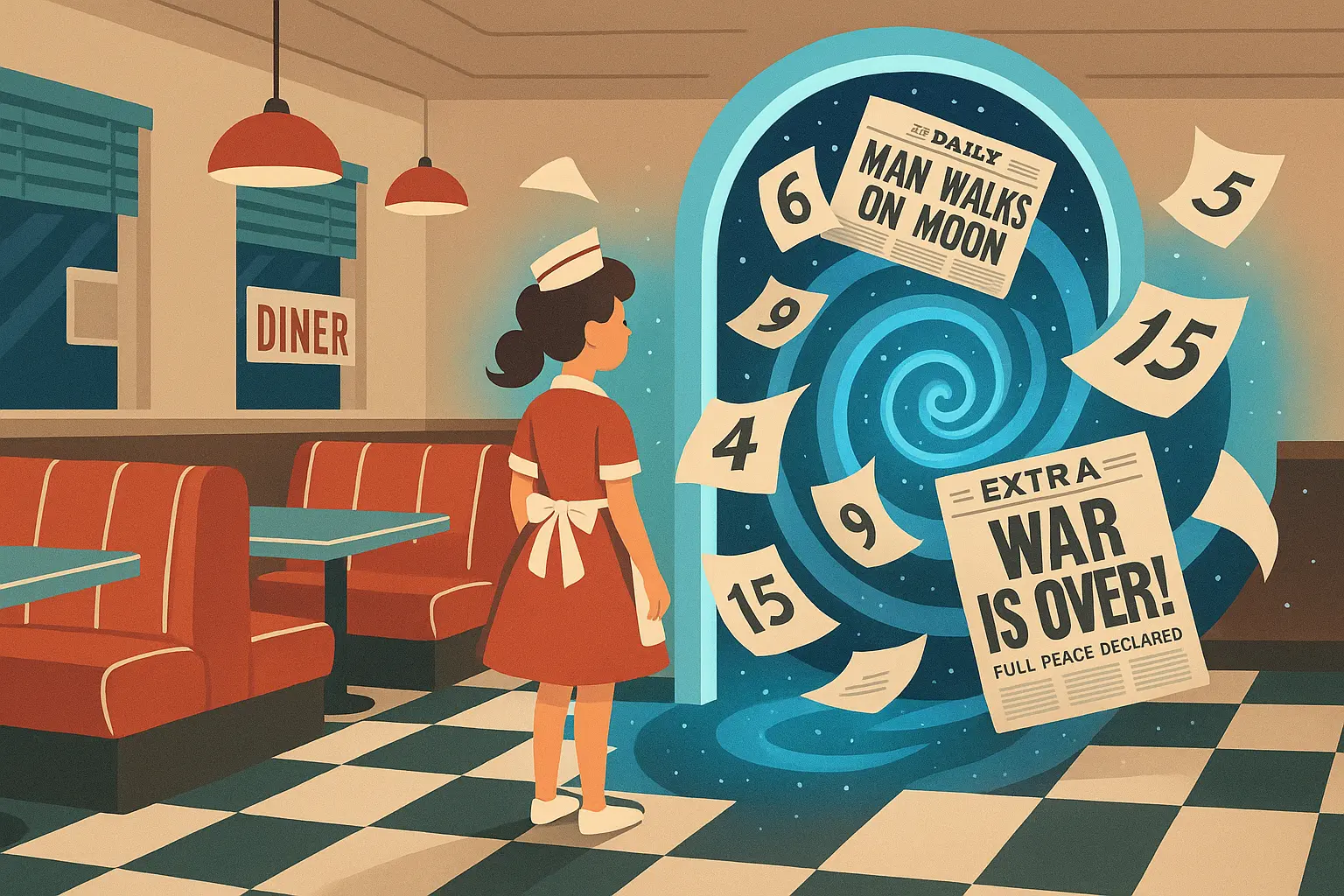
6. “The First Fifteen Lives of Harry August” by Claire North
Harry August dies and is immediately reborn as himself, with all his memories intact. He’s part of a secret group called the Cronus Club – people who live their lives over and over, remembering everything each time.
This book blew my mind because it solves the grandfather paradox in the most elegant way possible. Instead of people traveling through time, information travels through time. Harry can leave messages for the past by telling other club members, who pass them back through their rebirths.
The main story involves another club member who’s advancing technology too fast in each life, threatening to end the world centuries early. It becomes this incredible chess game played across multiple lifetimes, with Harry trying to stop a guy who has just as much experience and knowledge as he does.
7. “Kindred” by Octavia Butler
Dana, a modern Black woman, keeps getting yanked back to antebellum Maryland to save Rufus, her white ancestor. Butler never explains how or why this happens – she just drops Dana into slavery and forces her to survive.
This book is brutal. Butler doesn’t pull any punches about what slavery was really like, and Dana’s modern perspective makes the horror even more stark. She knows Rufus’s future, which creates these impossible moral dilemmas where she has to help someone she knows will grow up to be a slave owner.
What hits you hardest about this story is how Butler doesn’t sugarcoat anything. Dana doesn’t just read about slavery – she lives it, and it changes her in ways that persist even when she returns to the present. Butler uses time travel to make the past immediate and personal in a way that textbooks never could.
8. “Timeline” by Michael Crichton
Archaeologists get to travel back to 14th-century France using quantum technology. Crichton does his usual thing where he explains the science in detail – something about quantum foam and parallel universes – before throwing his characters into medieval warfare.
The historical accuracy in this book is incredible. Crichton researched everything from castle architecture to sword-fighting techniques to medieval French dialects. When the characters arrive in the past, you really feel like you’re there with them.
But the real tension comes from the corporate interests funding the research. The company has its own agenda, and the archaeologists slowly realize they’re not just observers – they’re pawns in a much bigger game.
9. “The Anubis Gates” by Tim Powers
Professor Brendan Doyle goes back to 1810 London to attend a Coleridge poetry reading but gets trapped in a world of Egyptian sorcerers, body-swapping villains, and literary intrigue. Powers mixes historical fiction with fantasy elements, creating a time travel story that runs on magic rather than science.
This book is deliciously complex. Powers weaves together multiple plotlines involving real historical figures like Lord Byron and Samuel Coleridge with completely fictional magical conspiracies. Doyle has to navigate both historical London and a supernatural underworld where people can swap bodies and werewolves roam the streets.
The research is incredible – Powers brings Regency London to life in all its grimy, dangerous glory. But he also creates this sense that history is full of hidden magical currents that most people never see.
Contemporary Fiction With Temporal Twists
These stories use time travel more like a literary device than a science fiction concept. They’re less interested in explaining how time travel works and more interested in what it means for the people experiencing it. Perfect if you want something thoughtful without getting bogged down in technical details.
Kate Atkinson’s “Life After Life” shows how this approach can be incredibly powerful. Instead of explaining why Ursula Todd lives multiple versions of her life, Atkinson focuses on how those different possibilities illuminate the weight of choice and chance in shaping our destinies.
10. “Life After Life” by Kate Atkinson
Ursula Todd lives multiple versions of her life, each starting with her birth in 1910 and branching into different possibilities based on small changes. Sometimes she dies as a child, sometimes she survives both World Wars, sometimes she prevents World War II entirely.
Atkinson doesn’t explain why this happens. Ursula just has vague impressions from her previous lives that influence her decisions. What matters isn’t the mechanism – it’s watching how tiny changes create completely different outcomes.
This book made me think about all the random moments that shaped my own life. What if I’d taken that other job? What if I’d moved to a different city? Atkinson explores these questions through Ursula’s multiple lives, showing how every choice creates a cascade of consequences.
11. “The Midnight Library” by Matt Haig
Between life and death, Nora finds herself in a magical library where each book represents a different version of her life based on different choices. She can experience these alternate lives fully – becoming a rock star, a glaciologist, a mother, a philosopher.
Haig’s concept is beautiful in its simplicity. Instead of time travel, Nora gets to explore the paths not taken. Each life feels completely real while she’s living it, complete with memories and relationships that never actually happened.
The emotional core of the story is Nora’s journey toward self-acceptance. She keeps thinking the next life will be perfect, but gradually realizes that every life contains both joy and sorrow. The midnight library becomes a metaphor for our tendency to imagine that different choices would have led to perfect happiness.
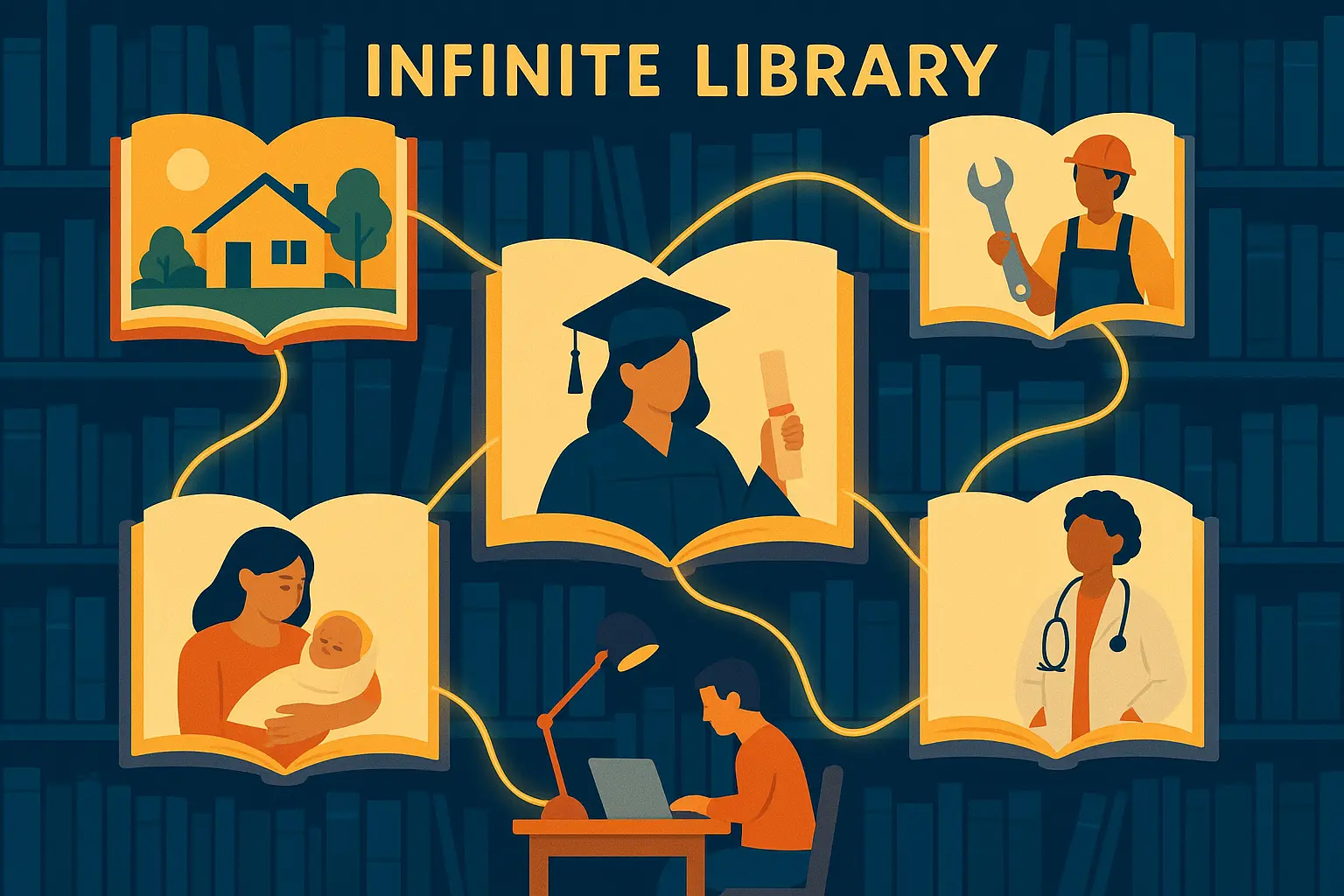
12. “Oona Out of Order” by Margarita Montimore
On New Year’s Eve 1983, nineteen-year-old Oona faints and wakes up in her fifty-one-year-old body in 2015. Every subsequent New Year’s Eve, she jumps to a different year of her life, living her decades out of sequence.
This concept fascinated me because it explores how living life out of order affects everything – relationships, career decisions, personal growth. Oona knows what’s going to happen in the world, but she lacks the emotional development that comes from experiencing life chronologically.
Montimore really digs into the practical problems this would create. How do you maintain friendships when you keep disappearing for years at a time? How do you make decisions about your future when you’ve already lived parts of it? The story becomes a meditation on whether knowledge and wisdom are the same thing.
13. “The Seven Husbands of Evelyn Hugo” by Taylor Jenkins Reid
Okay, this isn’t technically time travel, but Reid creates such a strong sense of moving through different eras of Hollywood history that it feels like temporal displacement. Evelyn Hugo reveals her life story to a young journalist, and each section feels like visiting a different decade.
Reid’s research is meticulous – from 1950s Hollywood glamour to 1980s excess, each era comes alive with authentic details. More importantly, she shows how Evelyn reinvents herself across decades, becoming essentially different people while remaining fundamentally the same.
The story explores how we all time travel in a sense – carrying our past selves with us while constantly becoming new versions of ourselves. Evelyn’s revelations recontextualize everything you thought you knew about her story, showing how the present is always shaped by secrets from the past.
Young Adult Adventures Through Time
YA time travel stories focus on the unique challenges of being a teenager when time itself becomes unstable. These books understand that adolescence already feels like living in multiple timelines – you’re not a kid anymore but not quite an adult, dealing with choices that feel monumentally important even though you barely understand their consequences.
14. “Before I Fall” by Lauren Oliver
Samantha Kingston relives her last day over and over after dying in a car accident. At first, she just tries to prevent her death, but gradually she starts seeing herself and her friends more clearly. Each repetition reveals new layers of cruelty and kindness she’d never noticed before.
This book hit me hard because it captures how cruel teenagers can be without even realizing it. Samantha starts out as a typical popular girl who doesn’t think much about how her actions affect others. The time loop forces her to confront the ripple effects of teenage social dynamics.
Oliver uses the repetition structure brilliantly. What seems like a simple story about a popular girl becomes a complex examination of how we become the people we are, and whether it’s ever too late to change.
15. “Miss Peregrine’s Peculiar Children” series by Ransom Riggs
Jacob discovers a time loop protecting children with supernatural abilities on a Welsh island. Riggs uses vintage photographs as story inspiration, creating a visual narrative that makes the peculiar children feel both magical and historically real.
The time loop concept works perfectly for the story’s themes. These children are literally stuck in time, protected from the dangers of the outside world but unable to grow or change. Jacob, a modern teenager, finds purpose and belonging in the 1940s loop, which raises questions about whether we sometimes need to step outside our own time to discover who we really are.
Riggs’ use of authentic vintage photographs grounds the fantasy elements in apparent reality. The images make you believe these peculiar children could have existed, which makes their abilities feel both wonderful and tragic.
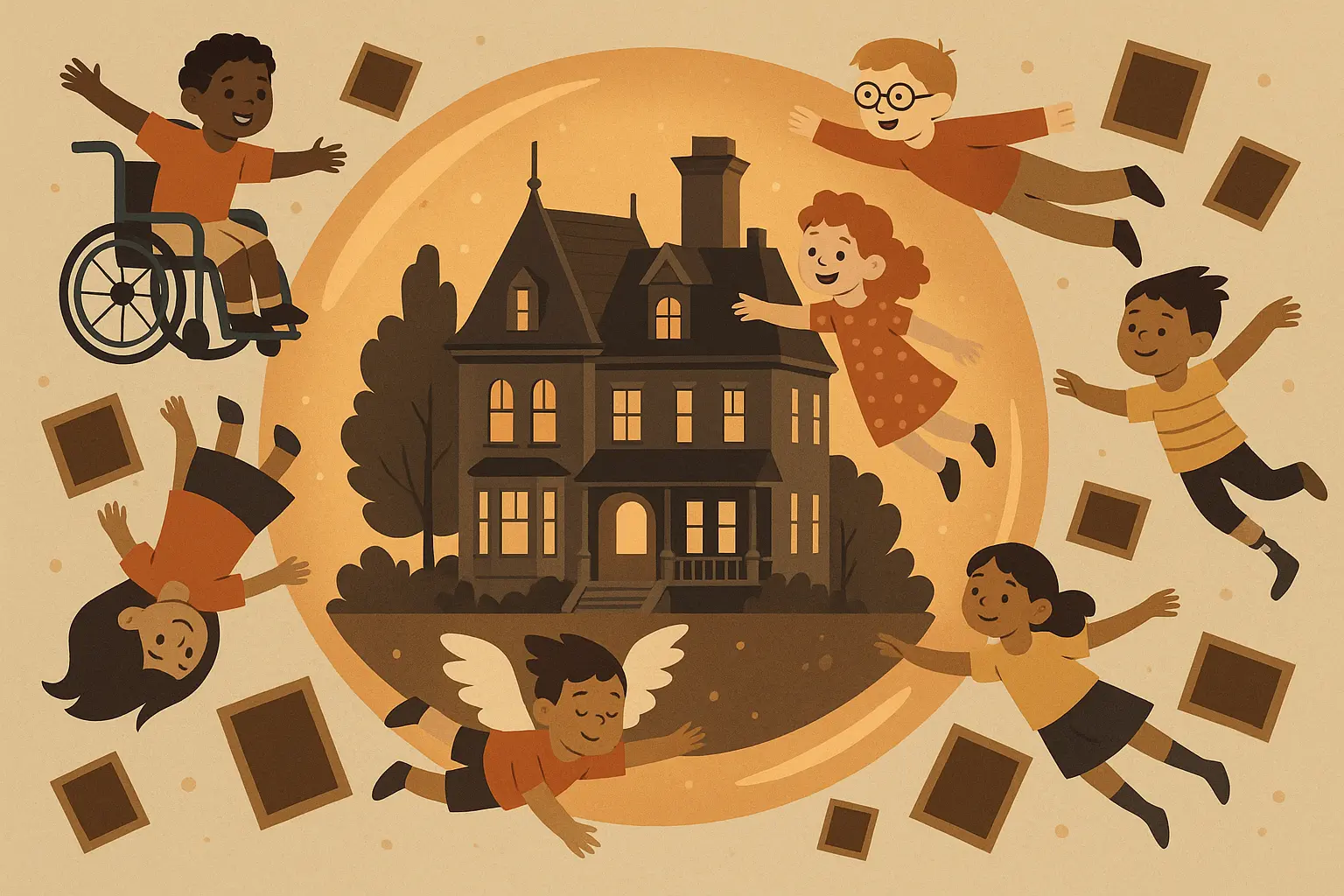
16. “The Future of Us” by Jay Asher and Carolyn Mackler
Emma and Josh, two teenagers in 1996, discover they can see their Facebook profiles from 15 years in the future through Emma’s new computer. Their attempts to change their destinies by altering present behavior create unexpected consequences.
This book perfectly captures the anxiety of knowing too much about your future. Emma becomes obsessed with changing her apparently unhappy marriage, while Josh discovers he’s destined for success but risks losing it through his present actions.
The authors nail the authentic voice of 1990s teenagers while exploring whether knowledge of the future actually helps or hurts. Sometimes ignorance really is bliss, and sometimes trying to force a different outcome just makes things worse.
17. “Rewind” by William Sleator
Eleven-year-old Peter gets the ability to “rewind” time to prevent his own death, but each rewind creates new problems. Sleator explores the psychological impact of repeatedly experiencing death and the moral burden of having power over time.
What makes this story work is how it shows that supernatural abilities aren’t always gifts. Peter’s power to change events doesn’t make his life easier – it makes it more complicated and isolating. Every rewind puts someone else in danger, forcing him to weigh his own survival against others’ wellbeing.
Sleator understands that even beneficial powers can become psychological burdens when they isolate you from normal human experience.
Horror Stories That Terrify Across Centuries
Horror time travel amplifies fear by removing the one escape we always think we have – time itself. Can’t run away? Usually you can at least wait for danger to pass. But when threats can follow you across decades or centuries, when you’re trapped in cycles of violence that span generations, that’s when time travel becomes truly terrifying.
The psychological terror in temporal horror draws from the same fundamental fears that make horror stories so effective, but cranked up to eleven by the impossibility of escaping across time itself.
18. “The Shining Girls” by Lauren Beukes
Harper Curtis, a time-traveling serial killer, hunts “shining girls” across different decades in Chicago. He’s pursued by survivor Kirby Mazrachi and journalist Dan Velasquez in the present day. Beukes creates a horror story where the killer’s temporal abilities make him nearly impossible to catch.
The structure alternates between different time periods, showing Harper’s crimes across decades while building toward the present-day investigation. You slowly understand the scope of Harper’s activities while the protagonists piece together an impossible pattern.
What’s terrifying about Harper isn’t just his violence – it’s his patience. He can stalk victims across their entire lifetimes, appearing at key moments to terrorize them before finally striking. The time travel element makes him feel omnipresent and unstoppable.
Beukes explores how trauma echoes through time, and how survivors like Kirby have to fight not just for justice, but for their own sanity when the evidence of their experiences seems impossible.
19. “Dark Matter” by Blake Crouch
Jason Dessen gets kidnapped and thrust into an alternate reality where he made different life choices. While not traditional time travel, Crouch’s exploration of parallel timelines creates similar disorientation and existential horror.
The real terror comes when Jason tries to return home and discovers that infinite versions of himself exist, each shaped by different choices. Some of these alternate Jasons are willing to kill to claim his life, creating a nightmare where your own identity becomes your enemy.
Crouch nails the psychological horror of losing trust in reality itself. When you can’t be sure which version of your life is “real,” how do you make any decisions? The story becomes a thriller where Jason’s running from himself – literally.
20. “Recursion” by Blake Crouch
NYPD detective Barry Sutton investigates “False Memory Syndrome” – people remembering lives they never lived. This leads him to neuroscientist Helena Smith, whose memory research accidentally created technology that can change the past.
The horror here is subtle but devastating. Imagine waking up with vivid memories of a completely different life – a spouse who doesn’t exist, children you never had, a career you never pursued. Now imagine this happening to everyone, repeatedly, as reality keeps getting rewritten.
Crouch’s structure mirrors the chaos, with chapters that repeat and diverge as characters try to fix increasingly complex problems. Each attempt to solve the crisis makes things worse, trapping Barry and Helena in cycles of failure and desperation.
21. “The Luminous Dead” by Caitlin Starling
Gyre Price, a deep-cave explorer, discovers time anomalies while fighting for survival in a hostile underground environment. The cave system contains temporal distortions that show glimpses of previous expeditions and possible futures.
The claustrophobic setting amplifies the horror – you’re already trapped underground, and now time itself is unstable. Gyre sees echoes of other explorers who died in the same caves, suggesting she might be doomed to repeat their failures.
Starling combines physical survival horror with psychological terror. When you can’t trust your own perceptions of time and causality, how do you make the split-second decisions that keep you alive?
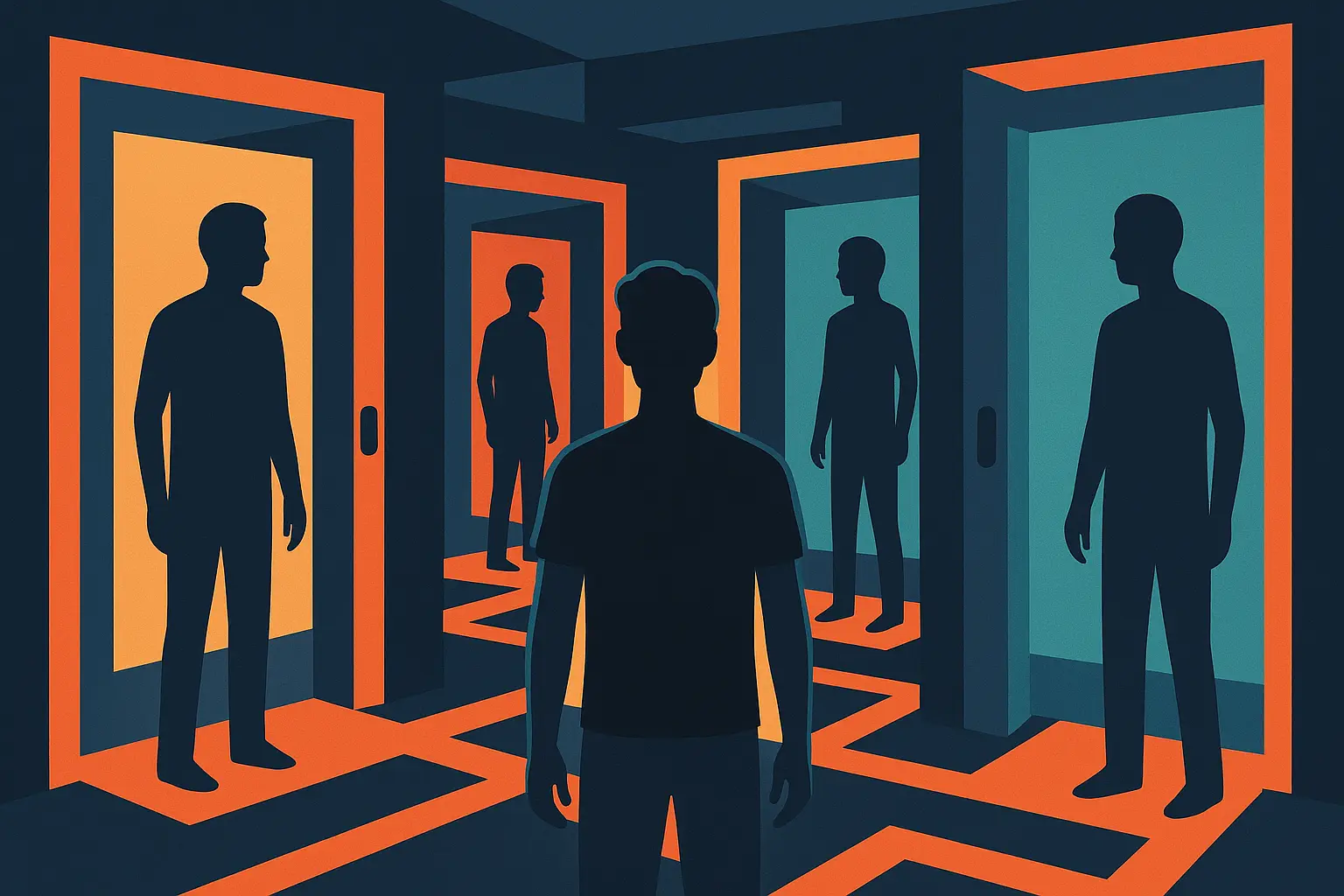
Short Stories and Novellas That Pack a Punch
Sometimes the best time travel concepts work better in compact doses. These short stories prove you don’t need 500 pages to blow someone’s mind or break their heart. They focus on single ideas and explore them with surgical precision.
The concentrated power of temporal short fiction shows how flash fiction techniques can distill complex concepts into memorable, impactful narratives that stick with you long after reading.
22. “A Sound of Thunder” by Ray Bradbury
Time Safari Inc. offers hunting trips to the prehistoric past with strict rules about not changing anything. When hunter Eckels panics during a T-Rex encounter and steps off the designated path, crushing a butterfly, he returns to find his present dramatically altered.
This story literally created the term “butterfly effect.” Bradbury shows how one tiny change – one crushed butterfly – can reshape civilization. The altered present Eckels returns to is subtly but terrifyingly different, with a fascist president instead of the liberal candidate who won in the original timeline.
What makes this story so powerful is its elegant simplicity. Bradbury doesn’t need complex plotting or multiple timelines. One mistake, one butterfly, one completely different world.
23. “All You Zombies” by Robert A. Heinlein
A time agent encounters a person who becomes their own mother, father, and child through a complex series of temporal manipulations and gender changes. This story will tie your brain in knots, but in the best possible way.
Heinlein reveals information gradually, letting you piece together the impossible relationships between characters who are actually the same person at different points in their timeline. It’s like a puzzle that gets more complex the more pieces you put together.
The story raises mind-bending questions about identity and free will. If you’re your own parent, ancestor, and descendant, what does individual identity even mean? And if everything is predetermined by your own future actions, do you actually have any choices?
24. “The Man in the High Castle” (selected stories) by Philip K. Dick
Dick’s characters often glimpse alternate timelines or question the nature of their reality. His approach to time and alternate history is deliberately ambiguous – maybe these glimpses are real, maybe they’re psychological, maybe reality itself is unstable.
What makes Dick’s stories so unsettling is how they suggest that our understanding of events might be incomplete or wrong. Characters find evidence that their world isn’t the “real” one, that other versions of history continue to exist alongside accepted reality.
Dick explores the horror of uncertainty – not knowing what’s real, what’s possible, or whether the life you’re living is the one you’re supposed to be living.
25. “By His Bootstraps” by Robert A. Heinlein
Graduate student Bob Wilson encounters multiple versions
of himself through time travel, creating a complex temporal loop where events seem to cause themselves. Wilson meets his future self, who recruits him for a mission that turns him into the future self who recruited his past self.
This story is Heinlein at his most philosophically complex. Wilson appears to have free will, making choices about whether to travel through time, but everything he does seems predetermined by his own future actions.
The bootstrap paradox gets its name from this story – if Wilson only travels through time because his future self tells him to, and his future self only exists because his past self traveled through time, where did the original idea come from?
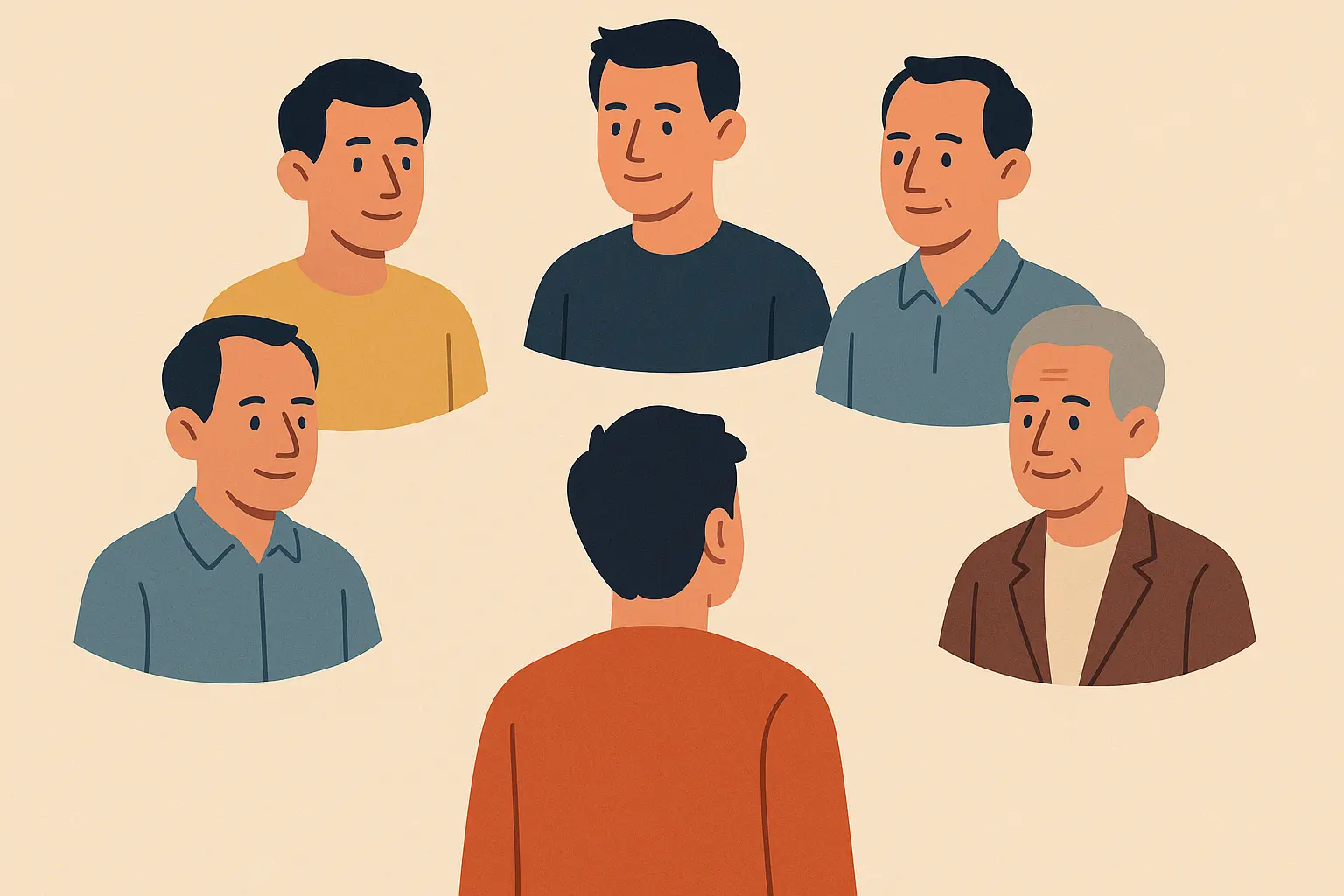
Deep Dive Analysis of Complex Time Travel Narratives
Some time travel stories are so intricate, so carefully constructed, that they deserve a deeper look. These are the books that reward multiple readings, where you catch new details and connections each time through. They’re the ones that other writers study to understand how complex plotting actually works.
“11/22/63” – Stephen King’s Masterpiece of Historical Speculation
King spent years researching this book, and it shows. Every detail of late 1950s and early 1960s America feels authentic, from the price of hamburgers to the social dynamics of small-town Texas. But the research serves the story, not the other way around.
The genius of King’s “obdurate past” concept is how it creates escalating stakes. Jake’s early attempts to change small things result in minor inconveniences – a flat tire here, a delayed train there. But as he gets closer to preventing Kennedy’s assassination, the resistance becomes life-threatening.
The relationship between Jake and Sadie provides the emotional heart that keeps you invested through 849 pages of historical detail and temporal mechanics. Their love story becomes a meditation on sacrifice – Jake has to choose between personal happiness and what he believes is his historical responsibility.
King’s climactic revelation that saving Kennedy creates a worse timeline is devastating because he’s made you care so much about Jake’s mission. The novel forces you to question whether some tragedies might be necessary to prevent greater ones.
“The First Fifteen Lives of Harry August” – Cyclical Existence and Moral Responsibility
Claire North’s innovation is elegant – instead of people traveling through time, information travels through time via the Cronus Club’s network of reborn individuals. This solves most time travel paradoxes while creating new storytelling possibilities.
The psychological exploration is what makes this book special. How do you maintain relationships when you know everyone you love will die while you continue? How do you find meaning when you can experience every possible variation of your life?
The chess game between Harry and Vincent plays out across multiple lifetimes, with each iteration revealing new strategies and information. It’s like watching two grandmasters play, except the board is the entire 20th century and the stakes are the end of the world.
North suggests that responsibility and connection to others provide purpose even in cyclical existence. Harry’s relationships with other club members and with linear-time people give his repeated lives meaning beyond mere accumulation of knowledge or experience.
“Kindred” – Historical Trauma and Temporal Displacement
Butler’s decision to leave the time travel mechanism unexplained is brilliant – it forces you to focus on the human drama rather than getting distracted by scientific speculation. Dana’s repeated journeys to antebellum Maryland become a form of historical immersion therapy.
The relationship between Dana and Rufus is the book’s masterpiece of moral complexity. Dana knows Rufus will grow up to be a slave owner, but she also sees him as a child who might be saved from that fate. Her attempts to influence him create impossible ethical dilemmas.
Butler shows how proximity to evil can corrupt even well-intentioned people. Dana finds herself making compromises she never thought she’d make, just to survive. The book suggests that understanding historical injustice requires more than intellectual knowledge – it demands emotional and physical confrontation with past realities.
The physical toll time travel takes on Dana – she loses an arm in the final transition – literally shows how historical trauma leaves permanent marks on those who experience it.
“Recursion” – Memory, Reality, and the Horror of Infinite Revision
Crouch’s exploration of memory as the foundation of reality is terrifying in its implications. If your memories can be changed, rewritten, or erased, what’s left of your identity? When reality becomes malleable, how do you make any decisions?
The structure mirrors the theme perfectly – chapters repeat and diverge as Barry and Helena try to fix problems that get worse with each attempt. You experience the same disorientation the characters feel as reality keeps shifting around them.
The relationship between Barry and Helena becomes the only constant in a universe where everything else can be revised. Their connection transcends individual timelines, suggesting that love might be the only thing that survives when reality itself becomes unstable.
Crouch raises profound questions about the nature of existence. If infinite versions of reality are possible, does any single version matter? The book suggests that meaning comes from our connections to others, not from the specific circumstances we find ourselves in.
How Each Story Measures Against Key Quality Criteria
Looking at these stories side by side reveals patterns in what works and what doesn’t. The best time travel fiction excels in multiple areas while using weaknesses strategically – some sacrifice scientific accuracy for emotional impact, others prioritize complex plotting over character development.
|
Story Title |
How Time Travel Works |
Character Growth |
Plot Complexity |
What It’s Really About |
Historical Accuracy |
Emotional Impact |
|---|---|---|---|---|---|---|
|
11/22/63 |
Crystal clear rules |
Strong growth |
Very complex |
Unintended consequences |
Incredibly detailed |
Hits hard |
|
Time Traveler’s Wife |
Genetic condition |
Deep emotional arc |
Medium complexity |
Love transcending time |
N/A |
Devastating |
|
Kindred |
Mysterious force |
Profound transformation |
Medium complexity |
Historical trauma |
Excellent research |
Gut-wrenching |
|
Timeline |
Quantum science |
Basic adventure growth |
Very complex |
Corporate exploitation |
Meticulous detail |
Decent thrills |
|
First Fifteen Lives |
Reborn with memories |
Thoughtful development |
Very complex |
Moral responsibility |
Good period detail |
Deeply moving |
|
Before I Fall |
Simple time loop |
Complete transformation |
Medium complexity |
Personal growth |
N/A |
Really hits you |
|
Slaughterhouse-Five |
Chaotic displacement |
Strong development |
Complex structure |
War trauma |
Good detail |
Emotionally heavy |
|
Life After Life |
Subtle mechanism |
Strong growth |
High complexity |
Fate vs. free will |
Excellent research |
Moving |
Time Travel Rules and Consistency Rankings
Crystal Clear: “11/22/63” establishes portal rules and never breaks them, while “The First Fifteen Lives of Harry August” creates a unique rebirth mechanism that sidesteps traditional paradoxes. “Timeline” grounds everything in quantum physics that actually makes sense.
Solid Mechanics: “The Time Machine” uses simple but effective device-based travel, “Kindred” maintains mysterious but consistent summoning, and “Dark Matter” applies parallel universe science logically throughout.
Intentionally Vague: “Slaughterhouse-Five” uses chaotic temporal displacement to reflect trauma, while “Life After Life” keeps its mechanism deliberately unclear to focus on deeper themes.
The most successful stories either explain their mechanics clearly or acknowledge their mystery honestly. Problems arise when authors try to have it both ways, providing pseudo-scientific explanations that fall apart under scrutiny.
Character Development Excellence
Life-Changing Growth: “The Time Traveler’s Wife” creates deep emotional connections across temporal displacement, “Kindred” shows profound character evolution through historical confrontation, and “Before I Fall” demonstrates complete personality transformation through repetition.
Strong Development: “11/22/63” provides clear mission-driven growth, “Oona Out of Order” explores identity formation across non-linear experience, and “The Shining Girls” creates compelling antagonist and survivor characters.
Functional Characters: “The Time Machine” employs archetypal explorer figure, while “Timeline” focuses on adventure over deep characterization.
The best time travel stories use temporal displacement to accelerate or complicate character development in ways impossible in linear narratives. Characters can confront their past selves, witness consequences of their choices, or experience multiple versions of their lives.
Plot Structure Mastery
Complex but Clear: “Recursion” manages intricate temporal mechanics without losing readers, “All You Zombies” creates perfect circular logic, and “The First Fifteen Lives” uses cyclical structure effectively.
Epic Scope Management: “11/22/63” maintains steady pacing across 849 pages, “Miss Peregrine’s” reveals mysteries gradually, and “The Anubis Gates” weaves multiple plot threads successfully.
Deliberately Challenging: “Slaughterhouse-Five” fragments narrative intentionally, while “Life After Life” uses repetition as structural element.
Successful time travel plotting requires exceptional organizational skills. Authors must track multiple timelines, maintain cause-and-effect relationships, and provide satisfying resolutions that account for temporal complications.
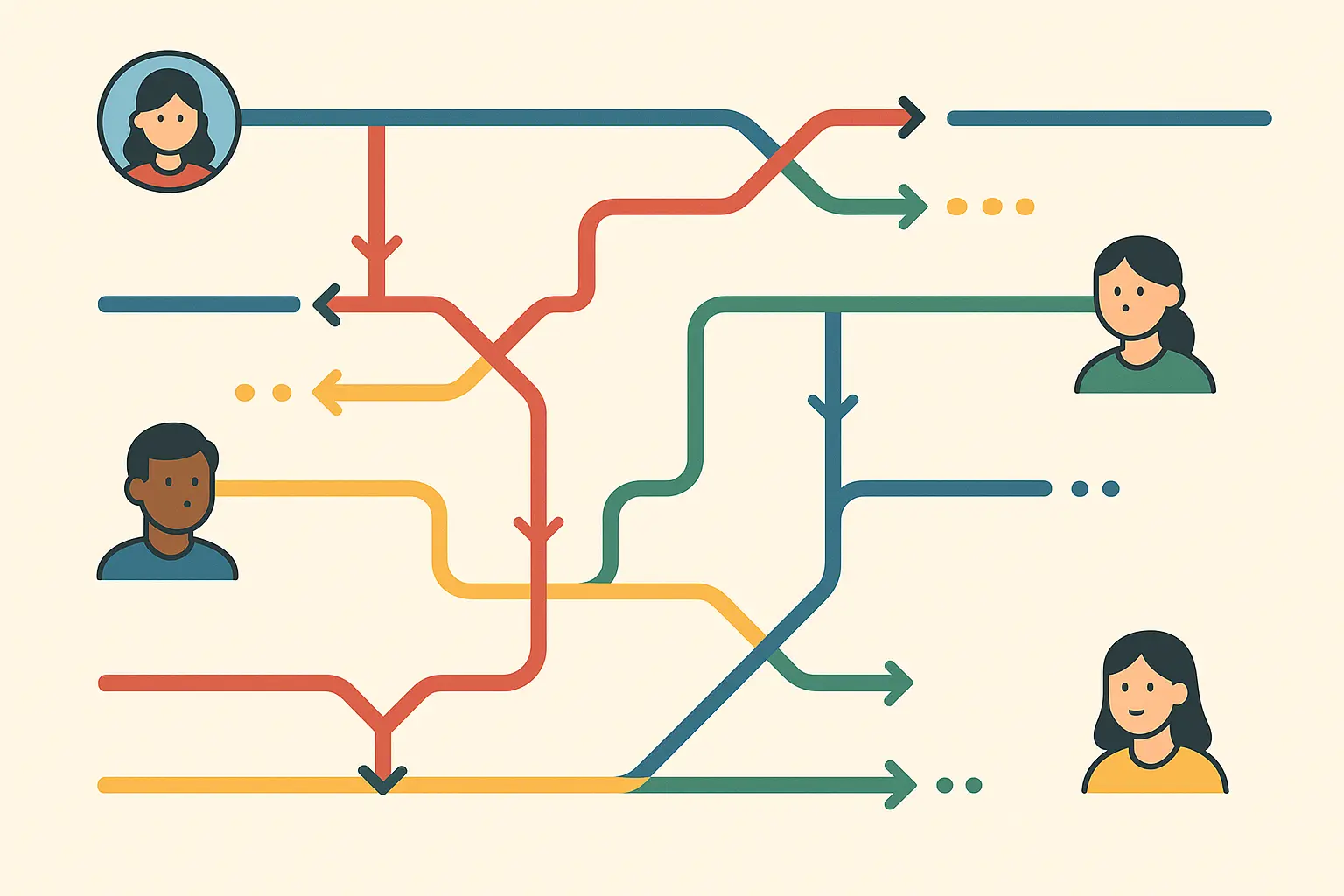
What These Stories Are Really About
Deep Exploration: “Kindred” examines racism and historical trauma unflinchingly, “Life After Life” explores fate versus free will across multiple iterations, and “The Time Traveler’s Wife” uses temporal displacement to examine love’s transcendent nature.
Substantial Themes: “11/22/63” investigates unintended consequences of historical change, “The Midnight Library” explores regret and possibility, and “Before I Fall” examines redemption and personal growth.
Pure Entertainment: “Timeline” prioritizes adventure over deep themes, while “Miss Peregrine’s” emphasizes fantasy adventure elements.
The most memorable time travel stories use temporal displacement to explore universal human experiences. Time travel becomes a lens for examining regret, destiny, love, mortality, and the weight of choice.
Historical and Future Accuracy
Meticulous Research: “11/22/63” recreates 1960s America with exceptional detail, “A Connecticut Yankee” demonstrates thorough medieval knowledge, and “Timeline” accurately depicts 14th-century France.
Solid Historical Grounding: “The Anubis Gates” brings Regency London to life, while “The Shining Girls” spans multiple historical periods convincingly.
Speculative Excellence: “The Time Machine” creates plausible far-future scenarios, while “The First Fifteen Lives” accurately depicts various 20th-century settings.
Historical accuracy enhances immersion and credibility, even in fantastical stories. Readers notice when authors haven’t done their research, and authentic period details ground even the most speculative elements in recognizable reality.
Emotional Gut Punch Impact
Heart-Wrenching Stories: “The Time Traveler’s Wife” creates devastating emotional impact through love and loss, “Before I Fall” generates powerful feelings about personal growth and redemption, and “Life After Life” explores infinite possibilities with deep emotional weight.
Deeply Moving Narratives: “Kindred” confronts historical injustice with raw emotional power, “11/22/63” examines sacrifice for the greater good, and “The Midnight Library” offers hope about second chances and self-acceptance.
Thrilling Experiences: “The Shining Girls” creates tension through survival and justice themes, “Recursion” builds stakes through reality-bending consequences, and “Dark Matter” explores identity crisis with mounting dread.
The best time travel stories connect with you on multiple emotional levels. They use the unique possibilities of temporal displacement to create moments of realization, loss, triumph, or terror that wouldn’t be possible in linear narratives.
Finding Your Perfect Time Travel Story Match
Different readers connect with different approaches based on what they want from their fiction. Here’s how to find stories that match your preferences:
|
Reader Preference |
Recommended Stories |
Why They Work |
What to Expect |
|---|---|---|---|
|
Hard Science Fiction |
Timeline, Dark Matter, First Fifteen Lives |
Logical explanations, scientific grounding |
Complex mechanics, detailed world-building |
|
Literary Fiction |
Life After Life, Midnight Library, Kindred |
Metaphorical use, character focus |
Deep themes, emotional resonance |
|
Romance |
Time Traveler’s Wife, Outlander |
Love transcending time |
Relationship focus, emotional stakes |
|
Horror/Thriller |
Shining Girls, Recursion, Luminous Dead |
Amplified fear elements |
Suspense, psychological terror |
|
Young Adult |
Before I Fall, Miss Peregrine’s, Future of Us |
Coming-of-age themes |
Personal growth, accessible storytelling |
|
Historical Fiction |
11/22/63, Connecticut Yankee, Anubis Gates |
Period immersion |
Research depth, cultural exploration |
For Hard Science Fiction Enthusiasts
Start with “Timeline” for quantum physics explanations, then try “The First Fifteen Lives of Harry August” for innovative mechanics. “Dark Matter” offers cutting-edge parallel universe concepts, while “11/22/63” provides detailed exploration of temporal consequences.
These stories satisfy readers who want logical explanations for time travel phenomena. They ground their fantastic elements in scientific theory or create consistent internal rules that feel plausible within their fictional universes.
For Literary Fiction Readers
“Life After Life” and “The Midnight Library” use time travel as metaphor for exploring life’s possibilities and regrets. “Kindred” demonstrates how genre elements can serve serious literary purposes, while “Slaughterhouse-Five” shows how temporal displacement can reflect psychological states.
These stories prioritize deep themes and character development over scientific accuracy. They use time travel to examine universal human experiences rather than focusing on the mechanics of temporal displacement.
For Romance Enthusiasts
“The Time Traveler’s Wife” remains the gold standard for romantic time travel, exploring how love transcends temporal boundaries. “Outlander” offers epic historical romance across centuries, while “Somewhere in Time” provides classic romantic fantasy.
These stories use time travel to create unique romantic obstacles and opportunities. Temporal displacement becomes a metaphor for the challenges and rewards of deep emotional connection.
For Horror and Thriller Fans
“The Shining Girls” combines serial killer thrills with temporal twists, while “Recursion” offers existential horror through reality breakdown. “The Luminous Dead” provides claustrophobic terror with time anomalies, and “Dark Matter” creates identity-based psychological horror.
These stories use time travel to crank up traditional horror elements. The inability to escape across time creates unique dread, while temporal displacement can represent loss of control or identity.
For Young Adult Audiences
“Before I Fall” offers accessible introduction to time loop concepts with meaningful character growth. “Miss Peregrine’s Peculiar Children” provides fantasy adventure with time travel elements, while “The Future of Us” explores how knowledge of the future might complicate present decisions.
These stories focus on personal growth and identity formation during formative years. They balance accessible storytelling with meaningful themes that resonate with both teen and adult readers.
For Historical Fiction Lovers
“11/22/63” provides immersive 1960s experience, “A Connecticut Yankee” offers satirical look at medieval society, and “The Anubis Gates” brings Regency London to vivid life. “Kindred” uses historical setting to examine ongoing social issues.
These stories use time travel to explore specific historical periods with attention to authentic detail. They often examine how past and present connect, showing how historical events continue to influence contemporary life.
For Short Story Enthusiasts
“A Sound of Thunder” demonstrates maximum impact in minimal space, “All You Zombies” creates mind-bending paradox exploration, and “By His Bootstraps” examines free will versus determinism. These stories prove that powerful time travel concepts don’t require novel-length development.
Short form time travel fiction often focuses on single concepts or paradoxes, exploring their implications with precision and economy. They’re perfect for readers who want concentrated doses of temporal speculation.
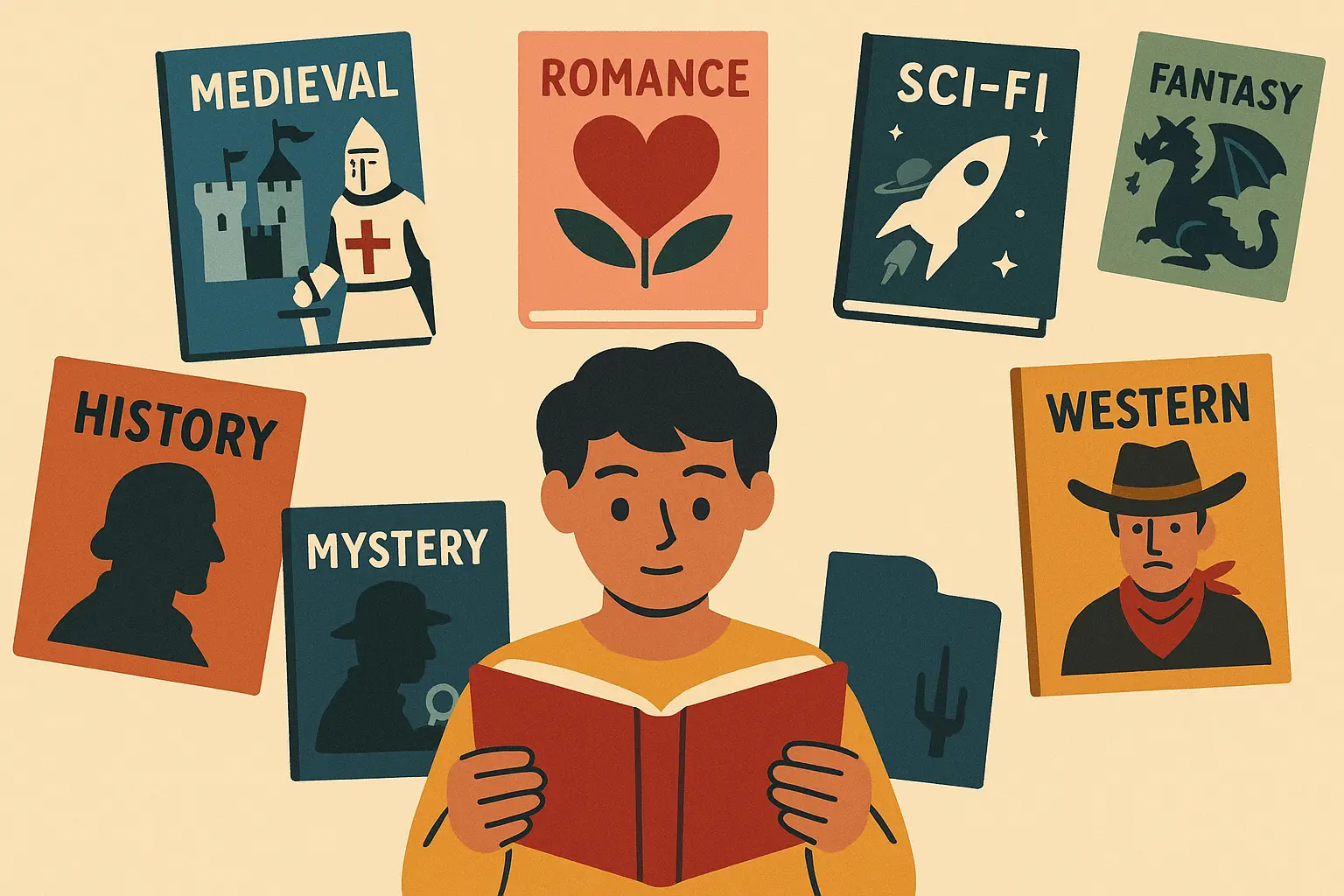
If you’re drawn to stories that blend scientific rigor with emotional depth, start with “11/22/63.” King establishes clear rules about his time portal while spending equal energy on Jake’s relationship with Sadie and his moral struggle over changing history. The novel shows how technical consistency can actually enhance emotional impact – you trust the story’s emotional beats because you trust its temporal mechanics.
Connecting Your Reading Journey with Creative Writing
Reading exceptional time travel stories often sparks the desire to create your own temporal narratives, but crafting compelling time travel fiction requires balancing complex plotting with emotional resonance. Whether you’re inspired by King’s epic historical speculation, Niffenegger’s intimate character focus, or Crouch’s mind-bending reality-shifting narratives, these stories demonstrate various approaches to temporal storytelling that can inform your own creative work.
For writers inspired to create their own temporal narratives, understanding story theme examples becomes crucial when developing the deeper meanings that separate great time travel fiction from simple genre exercises.
Time travel stories captivate us because they tap into our deepest desires: changing past mistakes, glimpsing future possibilities, or understanding how different choices might reshape our lives. These 30 stories showcase the remarkable versatility of temporal displacement as a narrative device, from hard science fiction to literary metaphor, from historical adventure to contemporary romance.
Each approach offers unique storytelling possibilities and challenges. Scientific rigor appeals to readers who prefer logical explanations, while mysterious mechanisms allow focus on character development and thematic exploration. Historical settings provide opportunities for research and cultural examination, while future scenarios enable speculation about human development and technological progress.
The best time travel stories share common elements regardless of their specific approach: compelling characters with clear motivations, consistent internal logic, meaningful themes that transcend the temporal gimmick, and emotional resonance that makes readers care about outcomes across multiple timelines.
If reading these stories has sparked your own creative ambitions, Nairrate’s AI-powered story generation tools can help transform inspiration into compelling narratives. Our Story Starters Generator provides opening lines tailored to your chosen approach – whether you need scientifically precise beginnings for hard SF, emotionally resonant openings for literary fiction, or thrilling hooks for temporal horror.
The Story Prompt Generator offers creative challenges specifically designed to explore time travel’s unique narrative possibilities. These prompts can push you toward different subgenres, helping you discover which approach best serves your creative vision while providing fresh perspectives when you’re struggling with temporal paradoxes or complex plotting.
Whether you’re crafting a short story about a single moment stretched across centuries or developing a complex novel with multiple timelines, Nairrate’s AI understands narrative flow and can help navigate the intricate plotting that time travel stories demand, similar to techniques explored in our first person story examples that demonstrate effective perspective management.

Final Thoughts
Time travel fiction keeps evolving as authors discover new ways to explore temporal displacement’s narrative possibilities. From Wells’ foundational scientific speculation to contemporary authors’ psychological and metaphorical approaches, these stories show how the genre adapts to reflect changing cultural concerns while maintaining its core appeal. The best time travel narratives use their unique temporal perspective to illuminate universal human experiences, creating stories that resonate across different eras and audiences.
These 30 time travel stories represent just a fraction of what’s possible when creative minds explore temporal displacement’s implications. They show how time travel can serve any narrative purpose – from examining historical trauma to exploring romantic connection, from investigating scientific possibilities to confronting personal regrets.
The genre’s continued popularity reflects our fundamental fascination with time’s nature and our place within it. We all wonder about paths not taken, mistakes we’d like to correct, or futures we hope to see. Time travel stories let us explore these universal concerns through the safety of fiction, providing both escapism and insight.
What makes these stories endure isn’t their scientific accuracy or temporal mechanics – it’s their humanity. The best time travel fiction uses its unique perspective to examine what it means to be human, how we relate to each other across time, and how we find meaning in our brief existence within the vast flow of history.
Whether you prefer the epic historical scope of “11/22/63,” the intimate emotional focus of “The Time Traveler’s Wife,” or the mind-bending complexity of “Recursion,” these stories offer something for every reader. They prove that time travel fiction can be literary or commercial, simple or complex, optimistic or pessimistic – what matters is the author’s commitment to exploring their chosen approach with skill and sincerity.
Ready to begin your own time travel reading adventure? The journey through these temporal narratives requires the same curiosity and openness found in these exceptional examples, and with the right story matched to your preferences, you can join the countless readers who’ve discovered that the best time travel isn’t about the destination – it’s about how the journey changes you along the way.
Keywords to Include: time travel stories, time travel books, best time travel fiction, temporal narratives, science fiction time travel, literary time travel, contemporary time travel novels, classic time travel literature, young adult time travel, horror time travel stories, time loop stories, parallel universe fiction, historical time travel, time travel romance, short time travel stories, time travel paradoxes, temporal displacement fiction, time travel themes, character development in time travel, plot structure time travel
Content Summary: This comprehensive guide explores 30 exceptional time travel stories across multiple genres and formats, analyzing what makes each narrative compelling and helping readers find their perfect temporal fiction match. From classic literature like H.G. Wells’ “The Time Machine” to contemporary works like Blake Crouch’s “Recursion,” the guide examines how different authors handle time travel mechanics, character development, and thematic depth. The analysis includes detailed breakdowns of complex narratives, quality criteria comparisons, and personalized recommendations based on reader preferences, making it an essential resource for anyone interested in exploring the rich landscape of temporal fiction.



Add comment